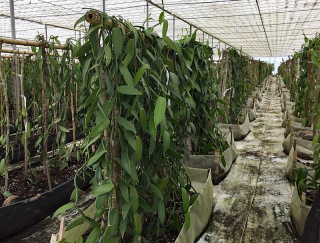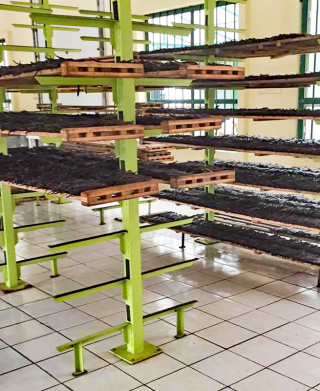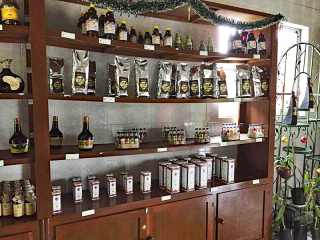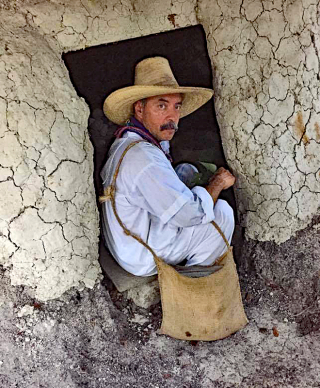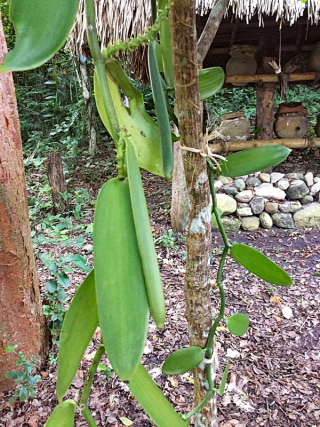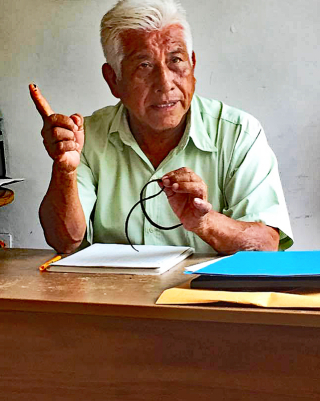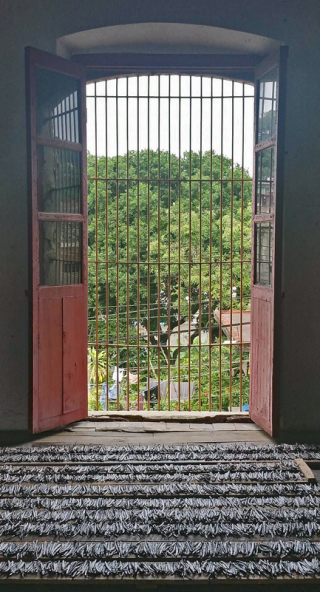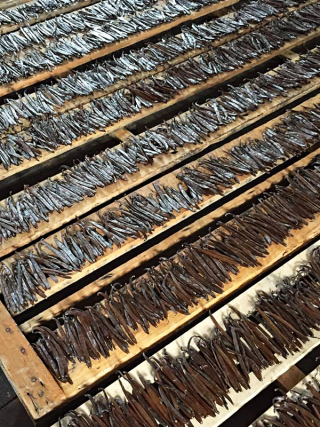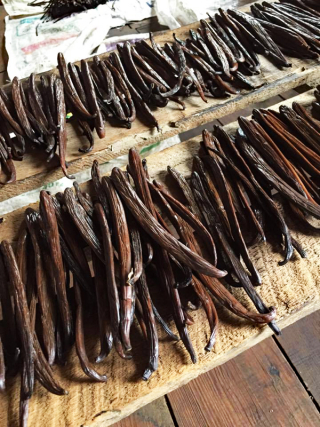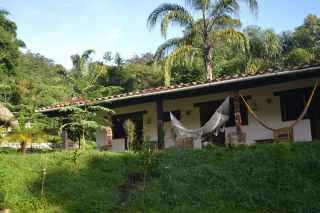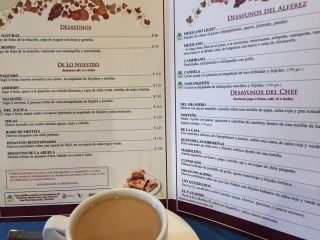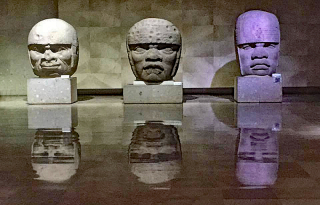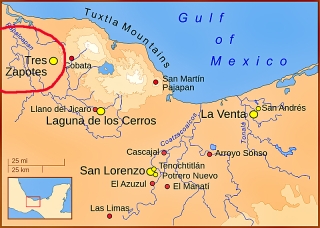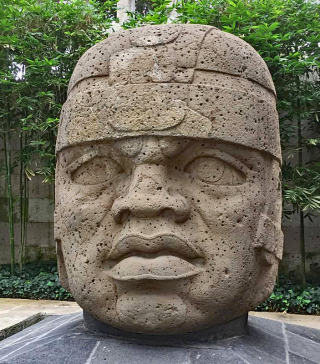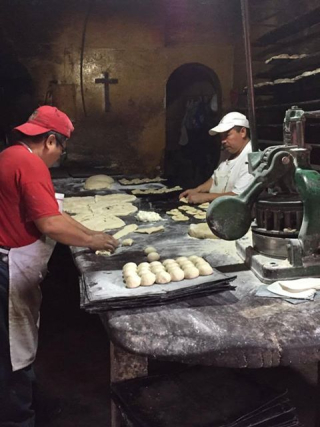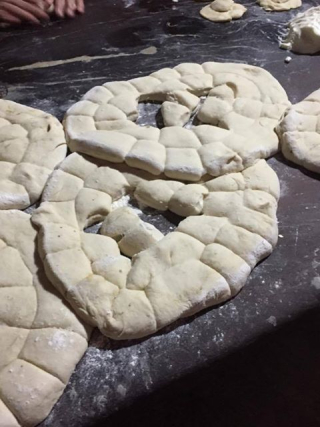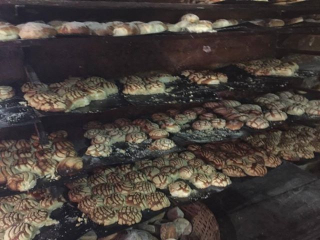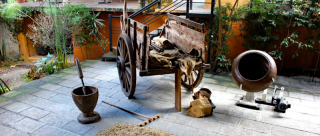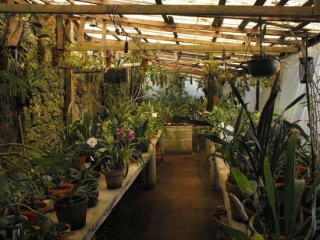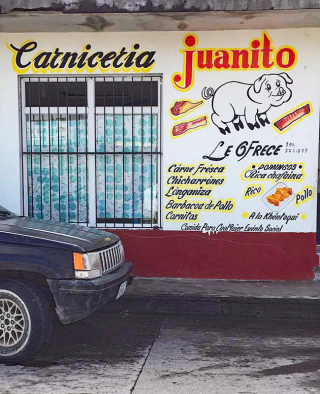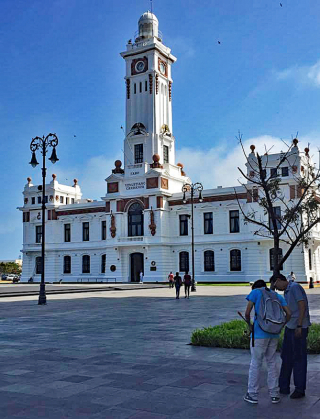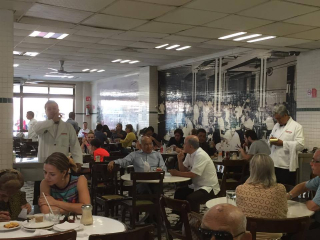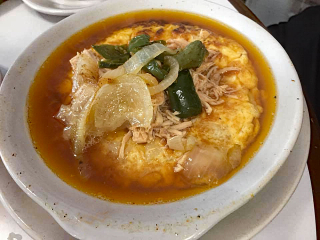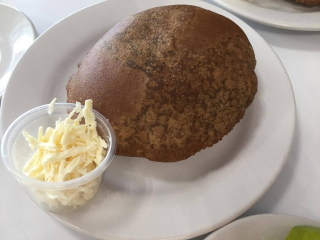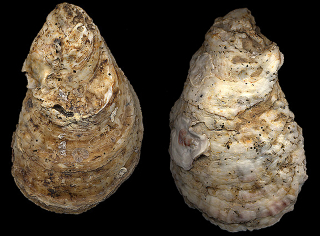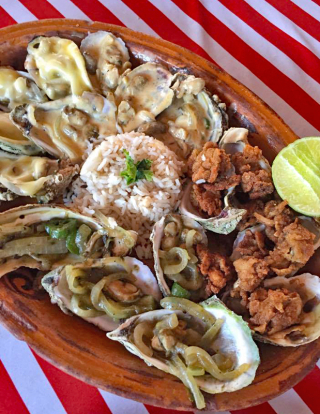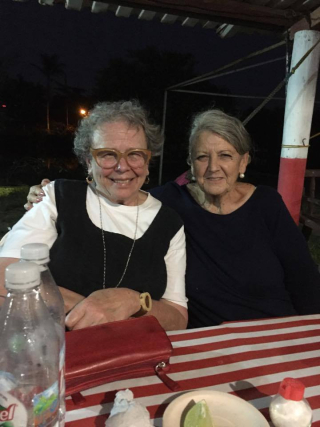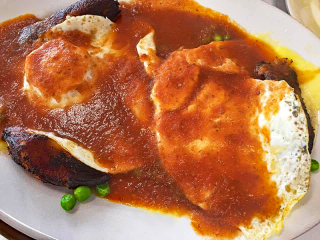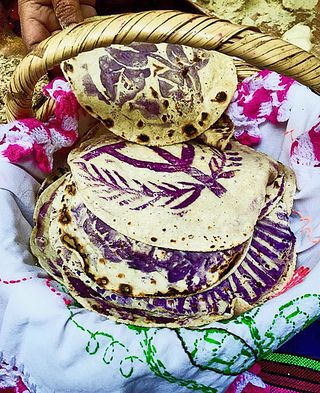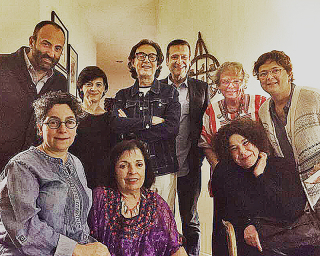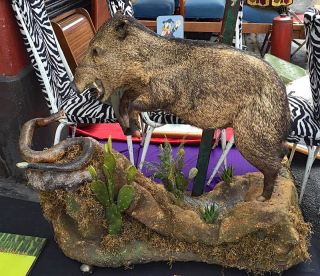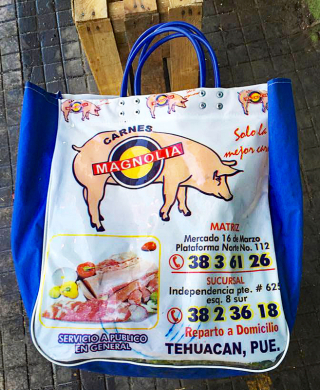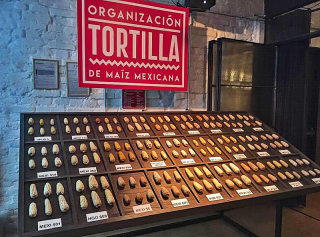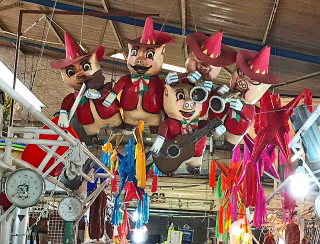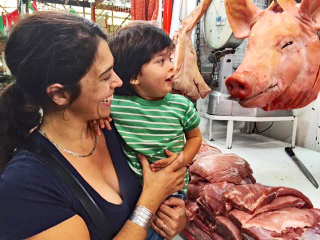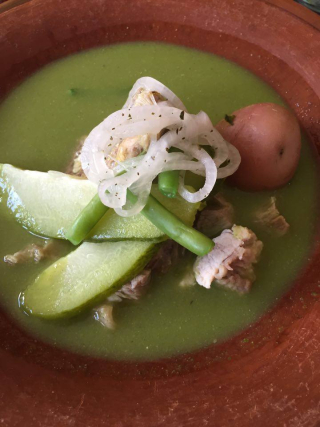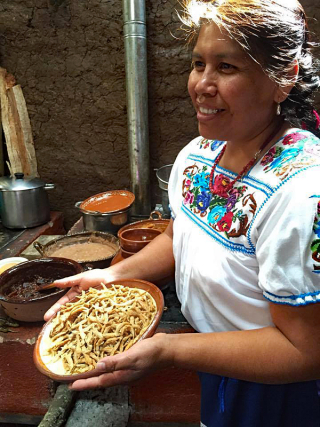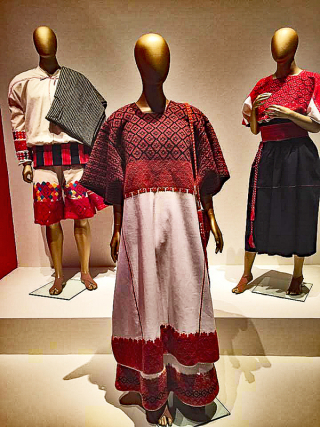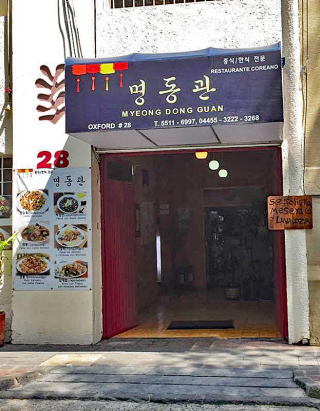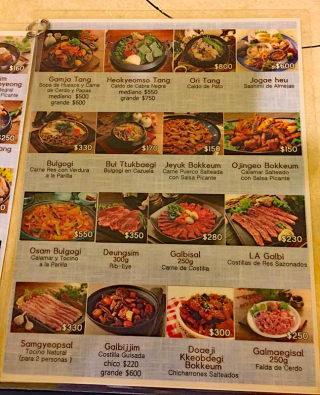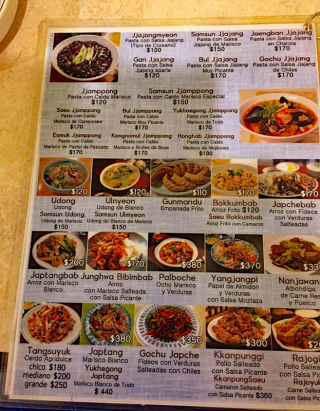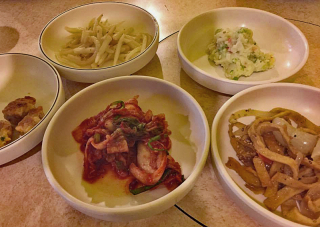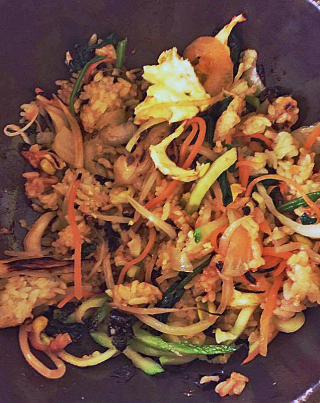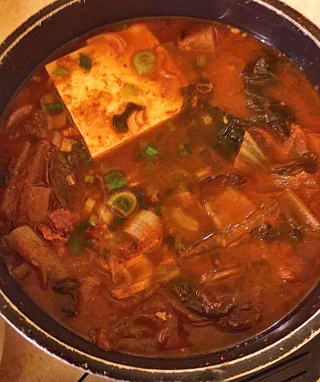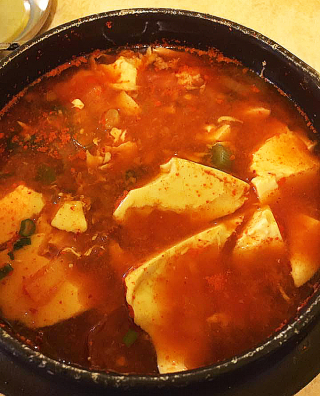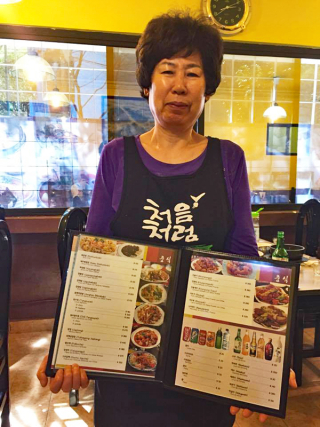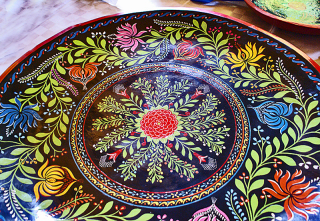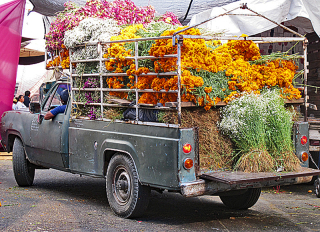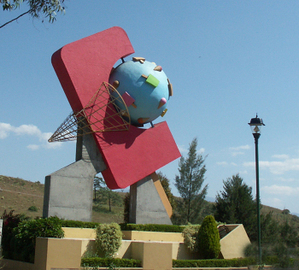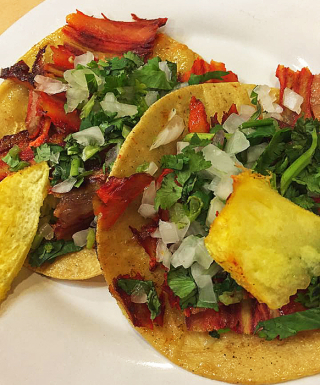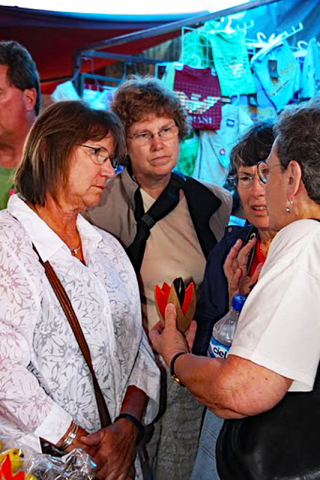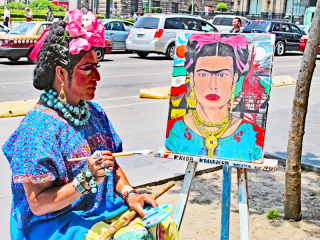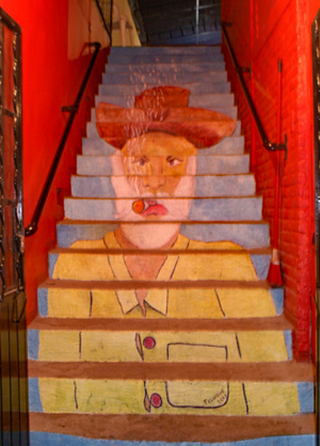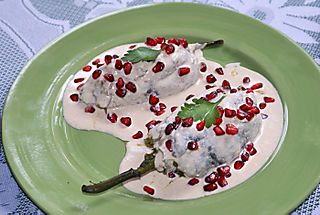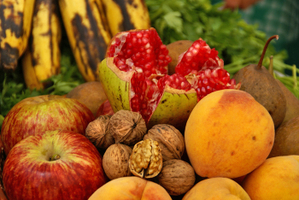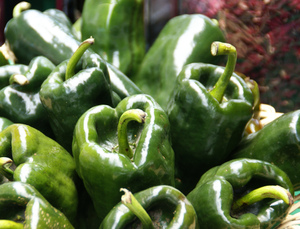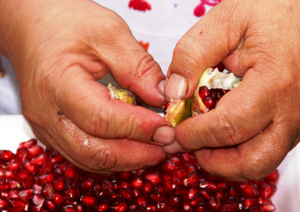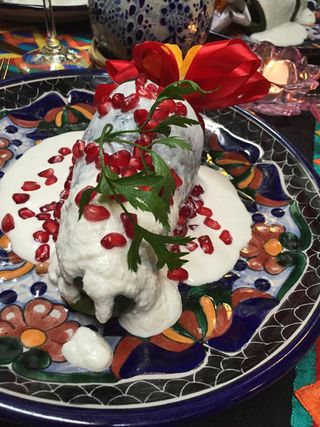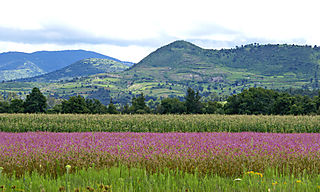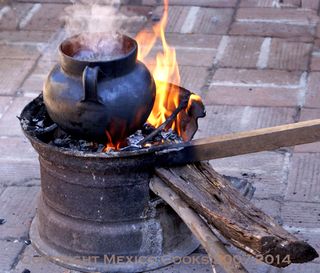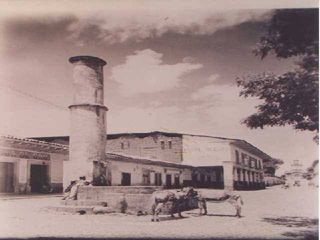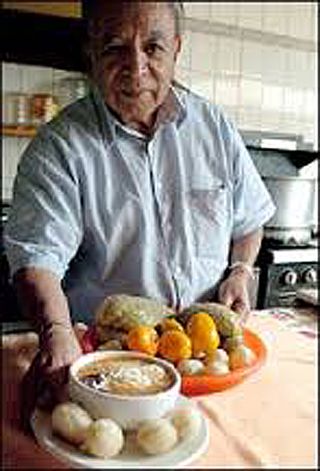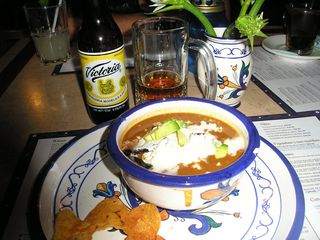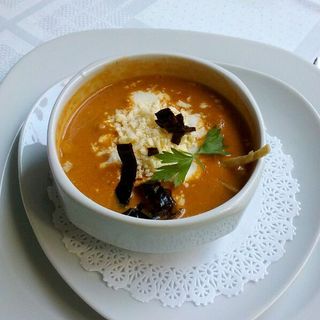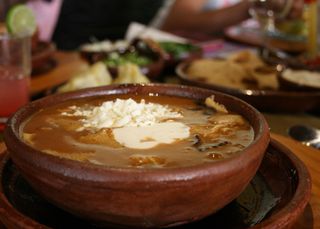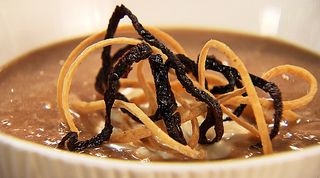
The truly wonderful Hotel Tajín. Our reservation was for one night, but the town of Papantla and the hotel were so delightful that we stretched it out to three nights! We enjoyed huge quiet junior suites, comfortable beds, great showers, excellent above-the-call-of-duty service, and prices lower than we'd thought possible. A big plus: Hotel Tajín is just a block from Papantla's main square and only a few steps farther from its two markets. If you need a place to stay in Papantla, don't hesitate to book here. All photos copyright Mexico Cooks! unless otherwise noted.
We're untiring food snoops, always seeking out any option for any kind of new taste, modern or millennial. In most regions of Mexico, traditional cooking is a great opening for getting acquainted with ancient cultures, ancient customs, and ancient rituals. Veracruz–especially the Papantla area and its surroundings–is one of those very special parts of the country, where ancient cuisine continues to be the heart and soul of the region.
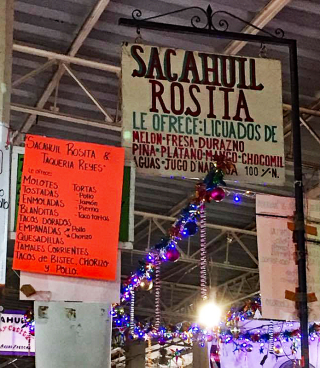
Inveterate investigators of food in general, we were on a hopeful hunt for traditional and regional Totonaco food. The tamales pintos that we tasted with the cocineras de humo near El Tajín had served only to whet our appetites for more of these Veracruz specialties. When we awakened after a restful night's sleep in our quiet hotel, our first stop would be Mercado Hidalgo, just a couple of blocks from Hotel Tajín. We were jonesing for a breakfast of zacahuil, another kind of Veracruz tamal. Many of the food booths at the Mercado Hidalgo specialize in regional zacahuil. We found a table at Sacahuil Rosita, on the upstairs level of the market.
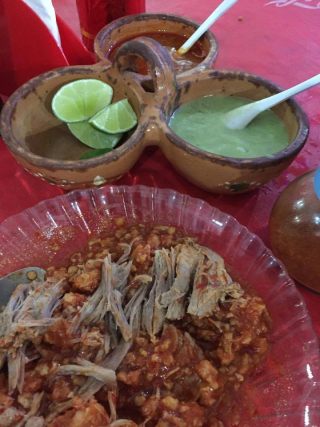
This zacahuil totonaco is prepared with masa martejada (dough made of coarsely broken corn), chile guajillo (a mild-flavored red chile), other mild spices, and pork meat. Cooked in a pot rather than wrapped in corn husks or banana leaves and fire-baked, it's ladled out into your bowl and served with a choice of salsas. We were glad to have tried the zacahuil, but we weren't thrilled with its somewhat mushy texture or its bland flavors. We hoped for better food luck later in the day.
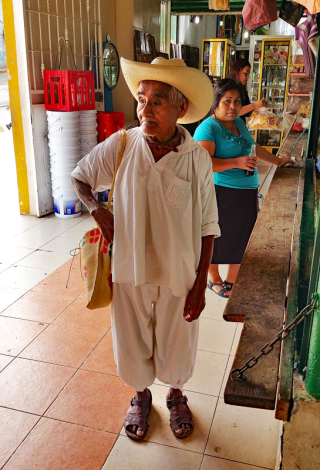
Meet don Rosendo, dressed in the traje típico totonaco (typical Totonaco men's clothing). He was quite pleased to be asked for his photo. Courtesy Pamela Gordon.
While we were out and about talking to vanilla producers, the name of one remarkable Papantla restaurant kept popping up in conversation: Restaurante Nakú Papanteco, offering traditional Papantla and Totonaco dishes. Lucky us: when we got back to the hotel, it was time for cena (supper), we were hungry, and a taxi stand was just outside our door. TAXI!
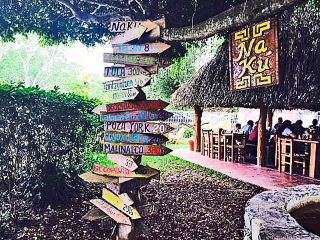
Restaurante Nakú Papanteco, built under a palapa, welcomed us warmly, brought us the menu and something to drink, and we settled in to our task: to order food that would wow us with its traditional sabores totonacos (Totonaco flavors).
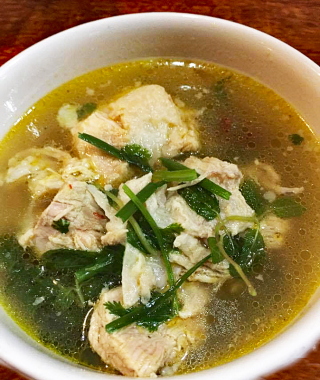
The Takxwayajun (caldo de pollo estilo totonaco con chile de mole, yerbabuena y cebollina) [traditional Totonaco chicken soup with chile de mole, mint, and chives], was hot and cozy on a cool December evening. The traditional Totonaco herbs, chile, and tender chicken combined for deep satisfaction.

An appetizer plate: the tabla de tripas de leche en chile seco. Tripas de leche are the milk glands in a cow's udder, as opposed to tripas, which are intestines. Menudo, which many people know as tripe, is the different linings of any of a bovine's four stomachs.
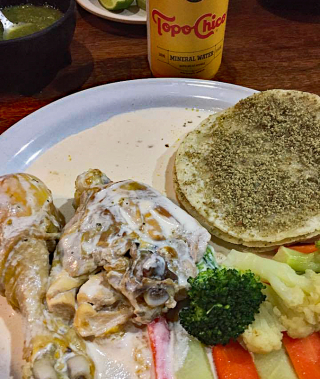
We were so interested in trying this chicken, bathed in very subtly-flavored vanilla sauce. Last week, Mexico Cooks! explained the profound link between Papantla and vanilla, but the flavor is infrequently used in savory dishes.
Who are the Totonaco? The indigenous community known as Tutunacú (in the Totonaco language, it means three hearts) dates from approximately 300 to 1200 CE (Common Era). By the time the Spanish arrived on the shores of what is now Veracruz, the Mexica (known much l
ater as the Azteca) had conquered and overtaken the region encompassing El Tajín, Papantla, and Cempoala. The Spanish completed the takeover; diseases formerly unknown to the indigenous people decimated their population.

Varinia Juárez and Lorenzo Collado, the delightful and highly committed owners of Nakú, who so generously shared their time, food, friendship, and some Totonaco history. Photo courtesy Restaurante Nakú.
"In the Totonaco culture, we love and profoundly respect nature, Mother Earth, and the four elements that govern the universe and the consequences of our lives. To live without these considerations is to live without a reason for being. There is no moment in the Totonaco life in which we don't consider this world view; nearly every action carries a ritual with it. Illnesses arise and are healed considering the wind, fire, water, and earth. In the fields, sowing follows the state of the moon and all farming cycles. In building, we ask the god of the forest for permission to cut down trees, and at the same time we beg forgiveness from Mother Earth for damaging her. With regard to food, women are offered up to the gods, so that in their homes, no one goes hungry.
"Nakú Restaurante Papanteco was born from a vision of rescuing, preserving, and promoting the Totonaco culture by means of its gastronomy, offering traditional Papanteco and Totonaco recipes, serving farm products endemic to the region and prepared by indigenous hands. The concept is enhanced by buying and selling artisan handwork and other works of art guaranteed to be made by Totonaco hands. Nakú is redolent of firewood, vanilla, history, ancestral culture–but above all, Nakú is filled with the fragrance of love. We love what we do, because our food brings together all of this yearning to be with family, to remember those long moments marked by the hand mill, the comal (clay griddle) the metate (rectangular 3-legged grinding stone), and in this environment, the grandmother, the daughters, and the granddaughters are the leading characters. Today, the fragrance of firewood at Nakú evokes in us the uses and customs of a people that, day by day, are being lost."

Squash seeds toasting over a wood fire, on a clay comal (griddle).
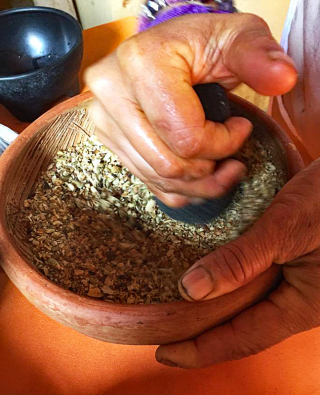
Mayora Celsa Santes Cimbrón, grinding pepitas (toasted squash seeds) using a molcajete and mano. A mayora, always an extremely knowledgeable and skilled woman, is the head of a kitchen.
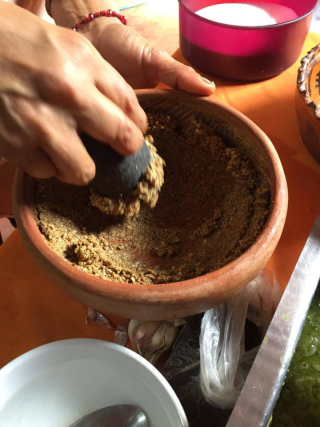
Mayora Celsa continued to grind the pepitas until they released enough of their oils to gather into a dough; she then formed them into little orejas (ear-shaped dumplings) that she served for breakfast in a regional vegetable soup, the morning after we'd had cena at Nakú.
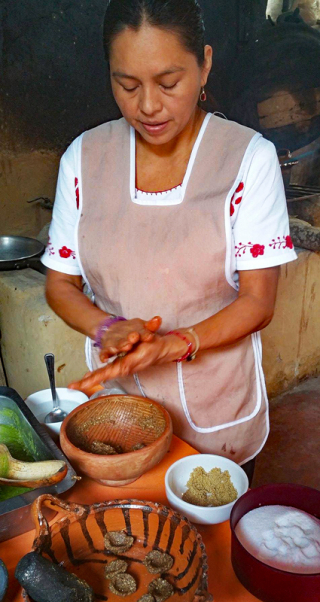
Mayora Celsa, forming the orejas. You can see the first few in the bowl at the bottom of the photo. Photo courtesy Pamela Gordon.
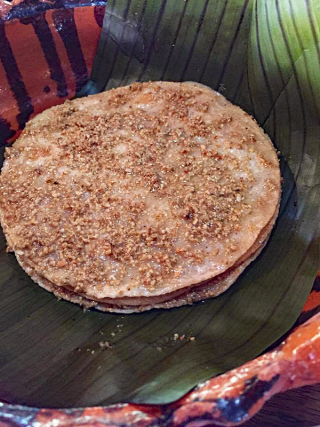
Totonaco tortillas untadas con pipián. Freshly made tortillas, spread with freshly rendered pork lard and sprinkled with toasted, molcajete-ground squash seeds. I wish you have an opportunity to taste these–a simple, elegant and completely heavenly thing, the stuff of dreams.
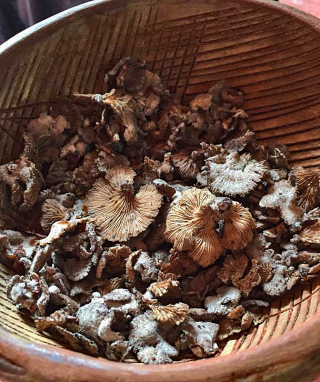
Freshly harvested hongos de chaca (local wild mushrooms); mayora Celsa prepared them in empanadas for our breakfast.
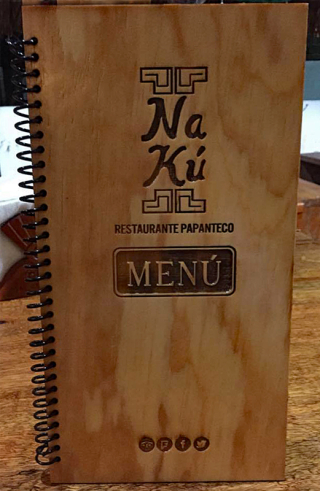
Nakú Restaurante Papanteco opened on February 14, 2013. If you are ever in Papantla, don't miss it. If you're even near Pap
antla, take the time, make a detour, eat the marvelous food on its menu. Tell them Mexico Cooks! sent you. On second thought, take me with you.
Looking for a tailored-to-your-interests specialized tour in Mexico? Click here to see new information: Tours


